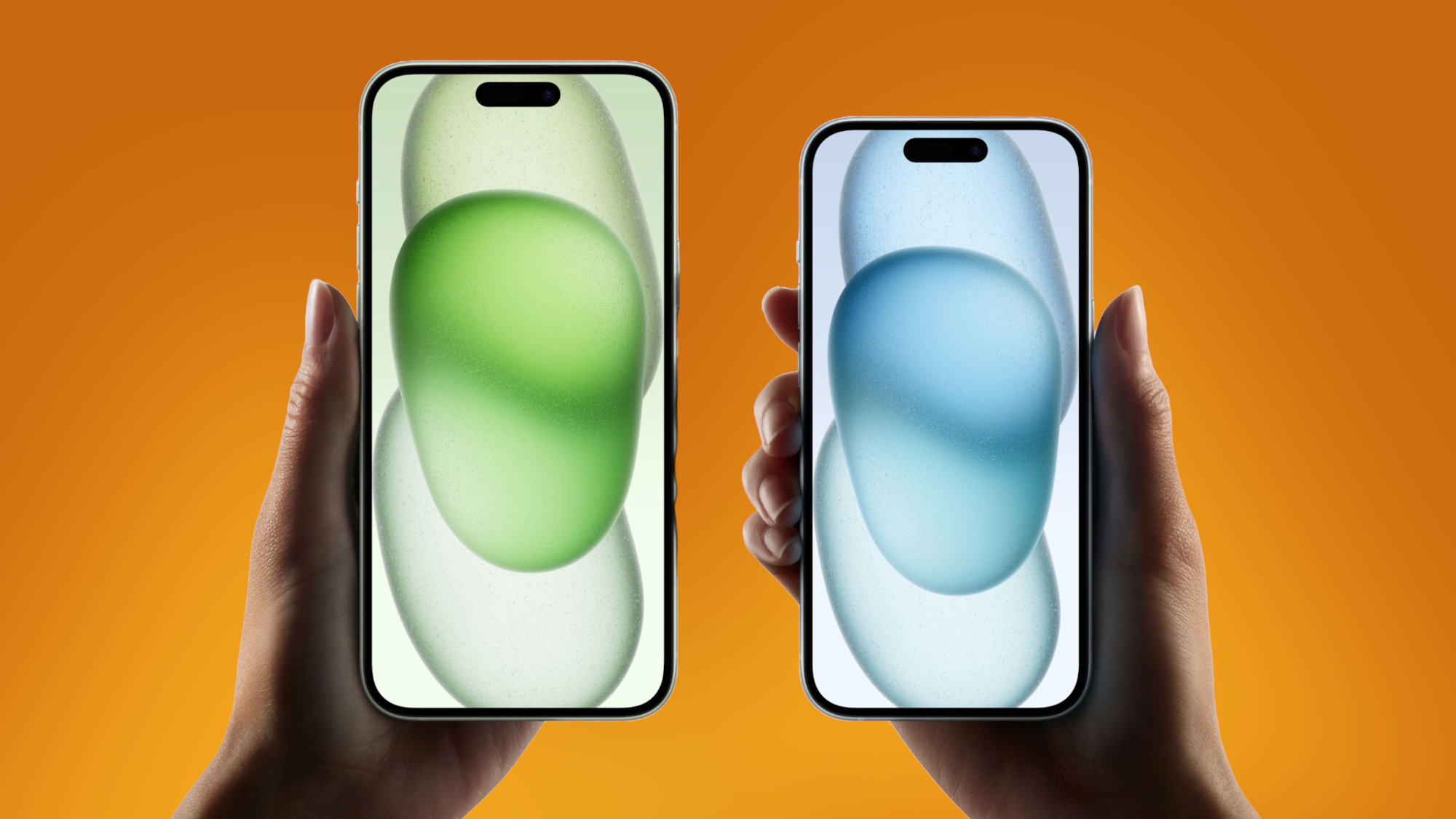
It’s been almost a month since Apple released its latest iPhones, and as our iPhone 16, iPhone 16 Plus, iPhone 16 Pro, and iPhone 16 Pro Max reviews detail, we’ve been impressed with this year’s lineup of flagship Apple handsets.
Each new iPhone brings substantial upgrades over its respective predecessor – the Camera Control button and A18 chipsets, for instance, are a highlight across the entire series – but there are still major differences to be found between every iPhone 16 model, as well as between the previous-generation iPhones still sold by Apple and third-party retailers.
So, whether you're a casual phone user or a diehard Apple fan, you might be left wondering which iPhone is best for you. That's why we’ve put together this handy guide as a quick and easy reference point for those looking to pick up a new iPhone.
Disclaimer: Apple Intelligence
Apple has called the iPhone 16 lineup the "first iPhones designed from the ground up for Apple Intelligence", but at the time of writing, Apple's AI features are still conspicuously absent from any of its devices. An official launch is expected in October.
In this article, we reference the upcoming ability of the iPhone 16 series and iPhone 15 Pro and Pro Max to run Apple Intelligence, but until Apple Intelligence is officially released, we can't recommend that you buy an iPhone based on its future AI potential.
iPhone 16: A compelling all-rounder
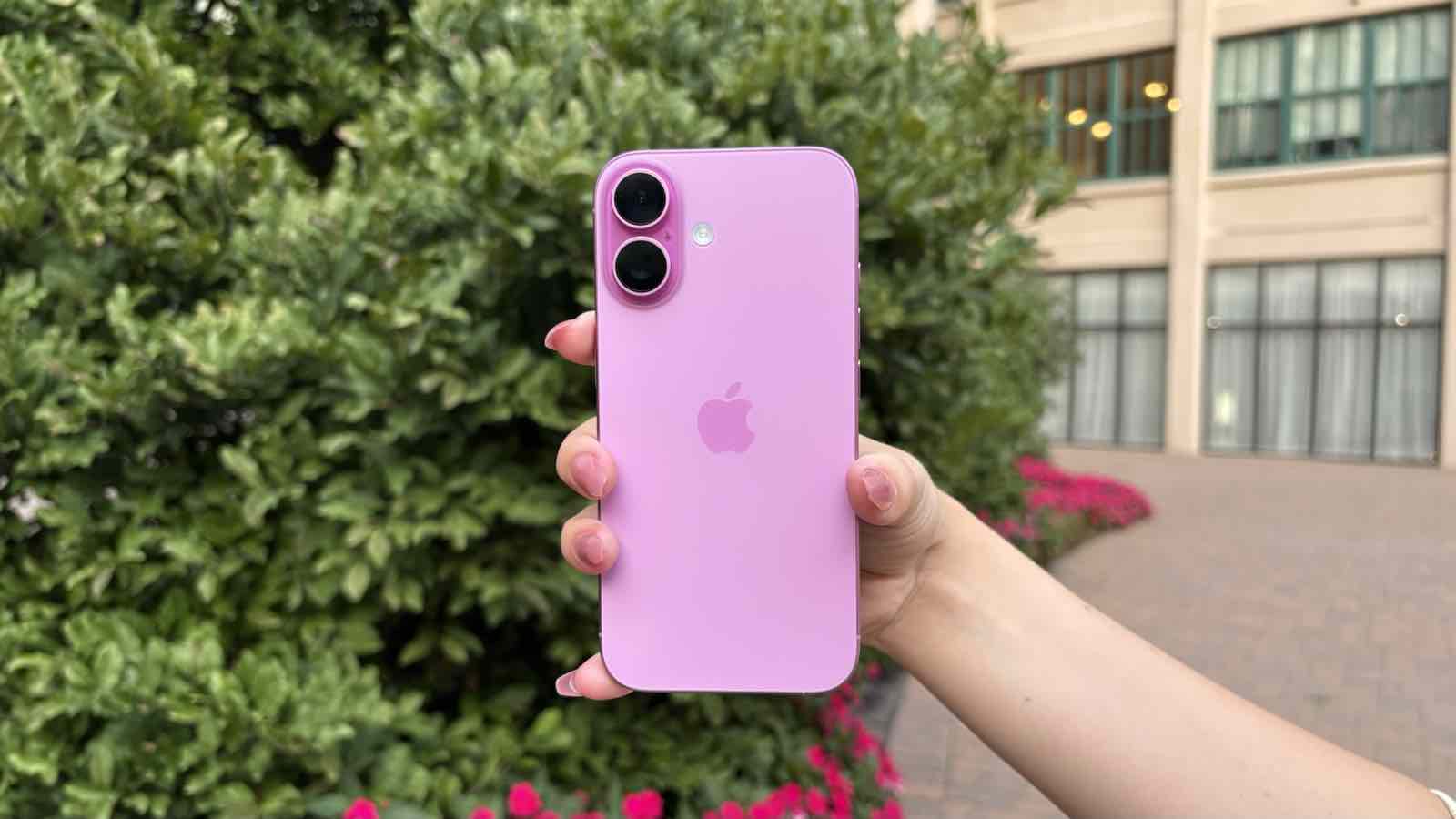
- The best iPhone for most people
- A lot of Apple's latest tech for a fairly reasonable price – Camera Control and Action Button
- The cheapest iPhone to get Apple Intelligence
- Starts at $799 / £799 / AU$1,399
The iPhone 16 is a great all-round phone that many people will find serves their needs perfectly – in fact, it’s our pick for the best iPhone for most people in our list of the best iPhones. The iPhone 16 packs the same great 6.1-inch OLED display and 48MP main camera as the iPhone 15 into a modernized design, while the new A18 chipset and increased RAM capacity of 8GB boost performance.
Our iPhone 16 review found the brand-new Camera Control button to be a solid reason to upgrade, and the Action Button inherited from the iPhone 15 Pro and Pro Max gives this base model iPhone more customization potential than ever. There’s never been a smaller gap between the base and Pro models.
The iPhone 16 is still stuck with a 60hz display and 12MP ultrawide camera, but if you can handle these limitations, this is a more powerful base-model iPhone than we’ve seen in years. It’s a great choice for all but the most demanding users.
What’s more, the iPhone 16 will get full Apple Intelligence integration when iOS 18.1 releases in October.
iPhone 16 Plus: the same, just bigger
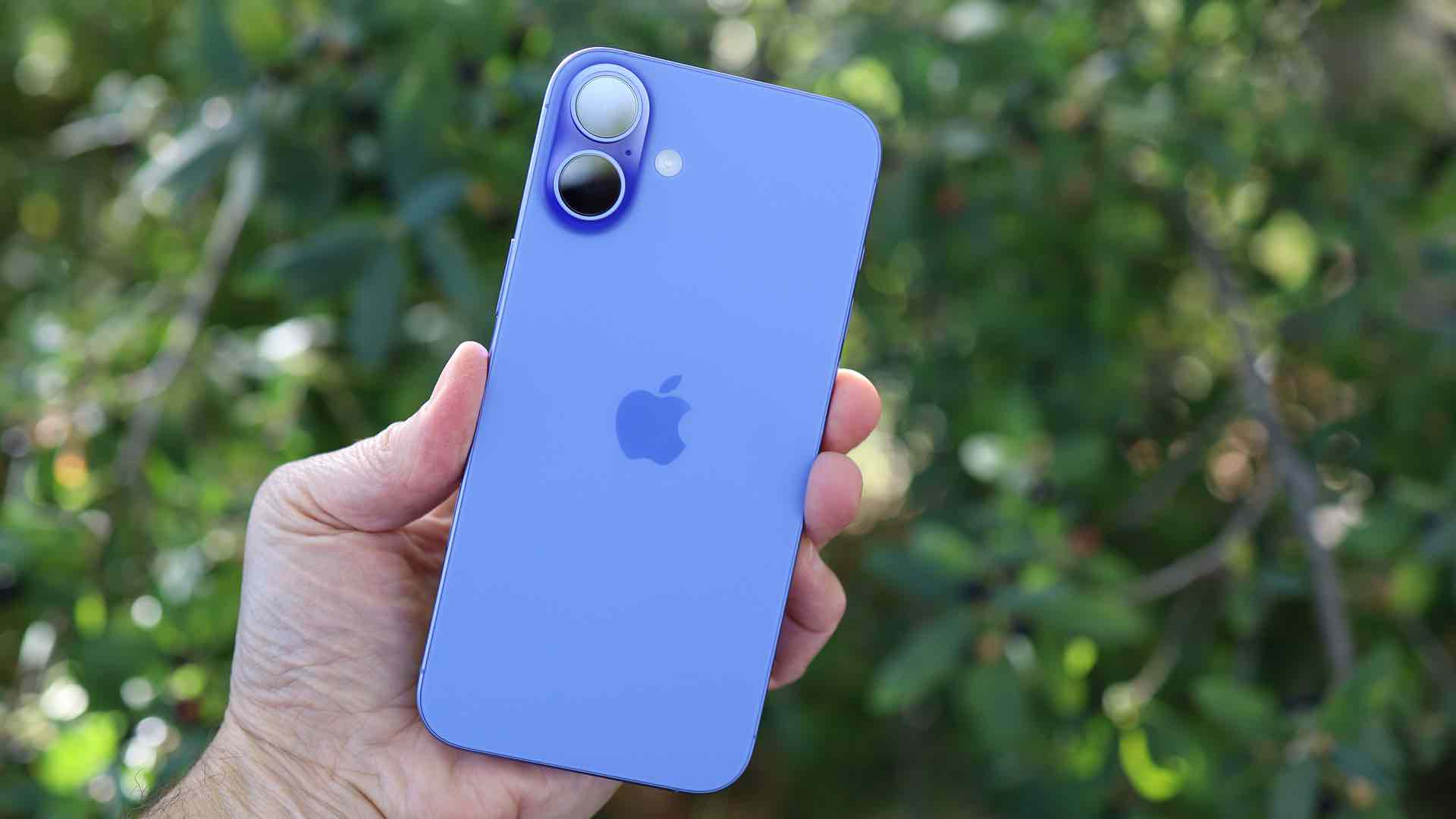
- The same great all-round experience as the iPhone 16 with a larger design
- Our pick for the best battery life in an iPhone
- The only Plus compatible with Apple Intelligence
- Starts at $899 / £899 / AU$1,599
The iPhone 16 Plus is the iPhone 16 with a bigger screen and larger dimensions, making this the best choice for people who just want a regular iPhone that’s a bit larger. It sets itself apart with its monstrous battery life, and is our choice for the best iPhone for battery life thanks to its impressive longevity on a single charge.
Our iPhone 16 Plus review found that the phone lasted for 16 hours and 29 minutes of mixed use on a single charge, which is spectacular not just for an iPhone, but for any smartphone.
As with its smaller sibling, the iPhone 16 Plus gains the new Camera Control button, offering more options than ever for taking pictures and videos. Our review found it to be a great choice for photographers, with the larger display enhancing the post-shoot viewing experience.
The iPhone 16 Plus has a 6.7-inch 60Hz OLED display with the same pixel density as the iPhone 16, and otherwise identical internal specs. You get the same A18 chipset and 8GB of RAM under the hood, the same 48MP main camera and 12MP ultrawide camera, and the same vibrant color options and updated design. It’s the same great phone, just bigger.
iPhone 16 Pro: pocket-sized power
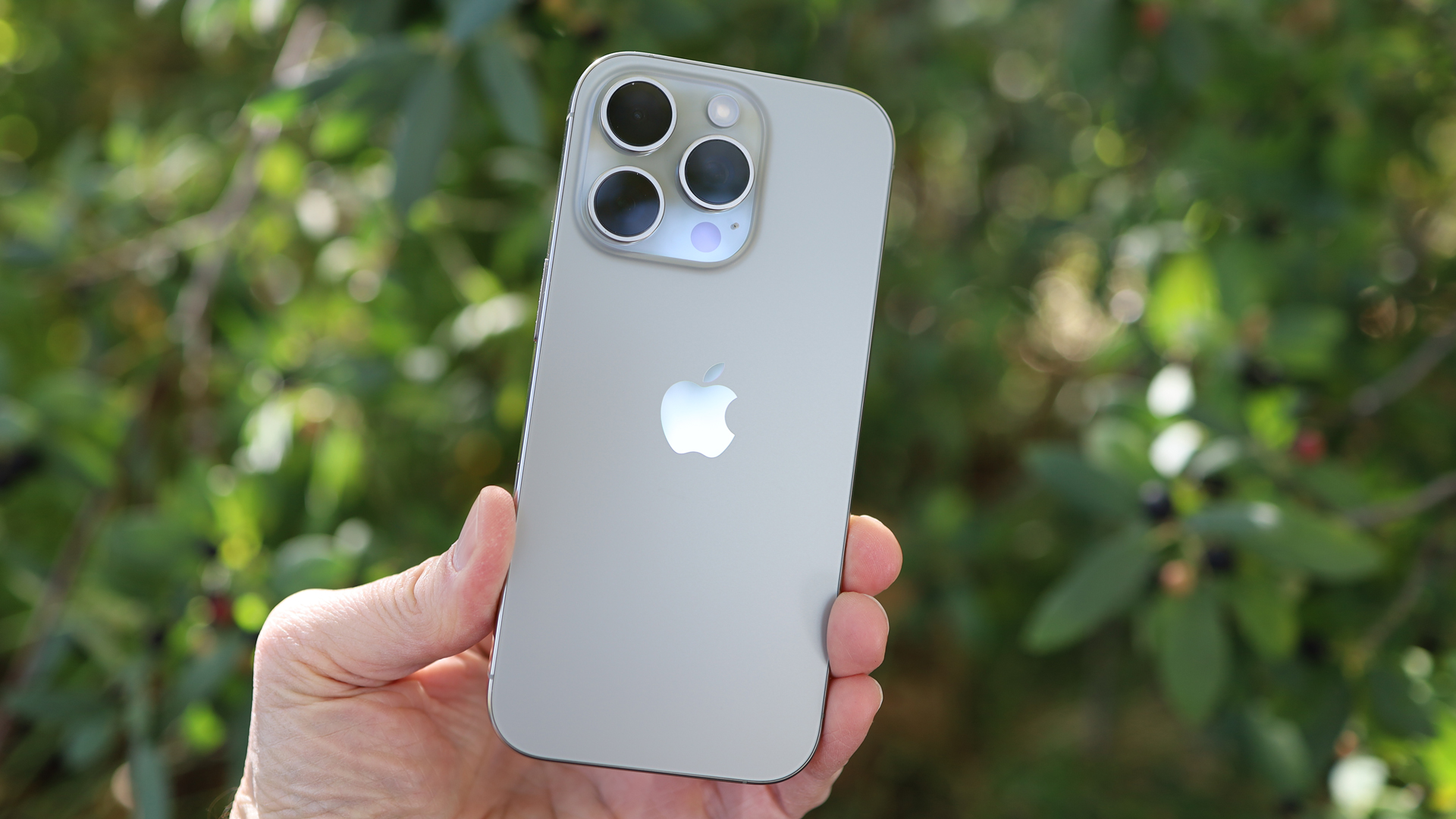
- The latest and greatest specs in a compact design
- Slightly larger than the iPhone 15 Pro at 6.3 inches with slimmer bezels
- Triple camera system with 5x optical zoom
- Starts at $999 / £999 / AU$1,799
The iPhone 16 Pro packs all of Apple's best smartphone specs into a compact package. This year’s Pro iPhone boasts an enlarged 6.3-inch OLED display with a variable 1-120Hz refresh rate, the same triple-camera system as the iPhone 16 Pro Max, and the blazing-fast A18 Pro chipset with 8GB of RAM.
The iPhone 16 Pro inherits the 5x telephoto lens from the iPhone 15 Pro Max, an upgrade from the 3x lens found on the iPhone 15 Pro. This telephoto camera sits alongside a 48MP main camera and a 48MP ultra-wide camera, and all three cameras gain new control options from the Camera Control button. There's also a new 4K 120fps slow-motion video mode.
The A18 chipset brings substantial performance boosts to the iPhone 16 Pro, and Apple pledges up to 15% faster CPU performance and up to 20% faster GPU performance than the previous generation. Our iPhone 16 Pro review notes that the phone simply flew through anything we tried to test it with.
This year’s Pro iPhones have the exact same camera system and internals, which makes the choice between the two more about personal preference.
The iPhone 16 Pro is noticeably smaller and, at a weight of 199g, it's 28g lighter than the iPhone 16 Pro Max; differences which do add up over time. The iPhone 16 Pro is also substantially cheaper than the iPhone 16 Pro Max, but it comes with only 128GB of storage to start with, compared to the latter's 256GB.
iPhone 16 Pro Max: The most powerful iPhone ever
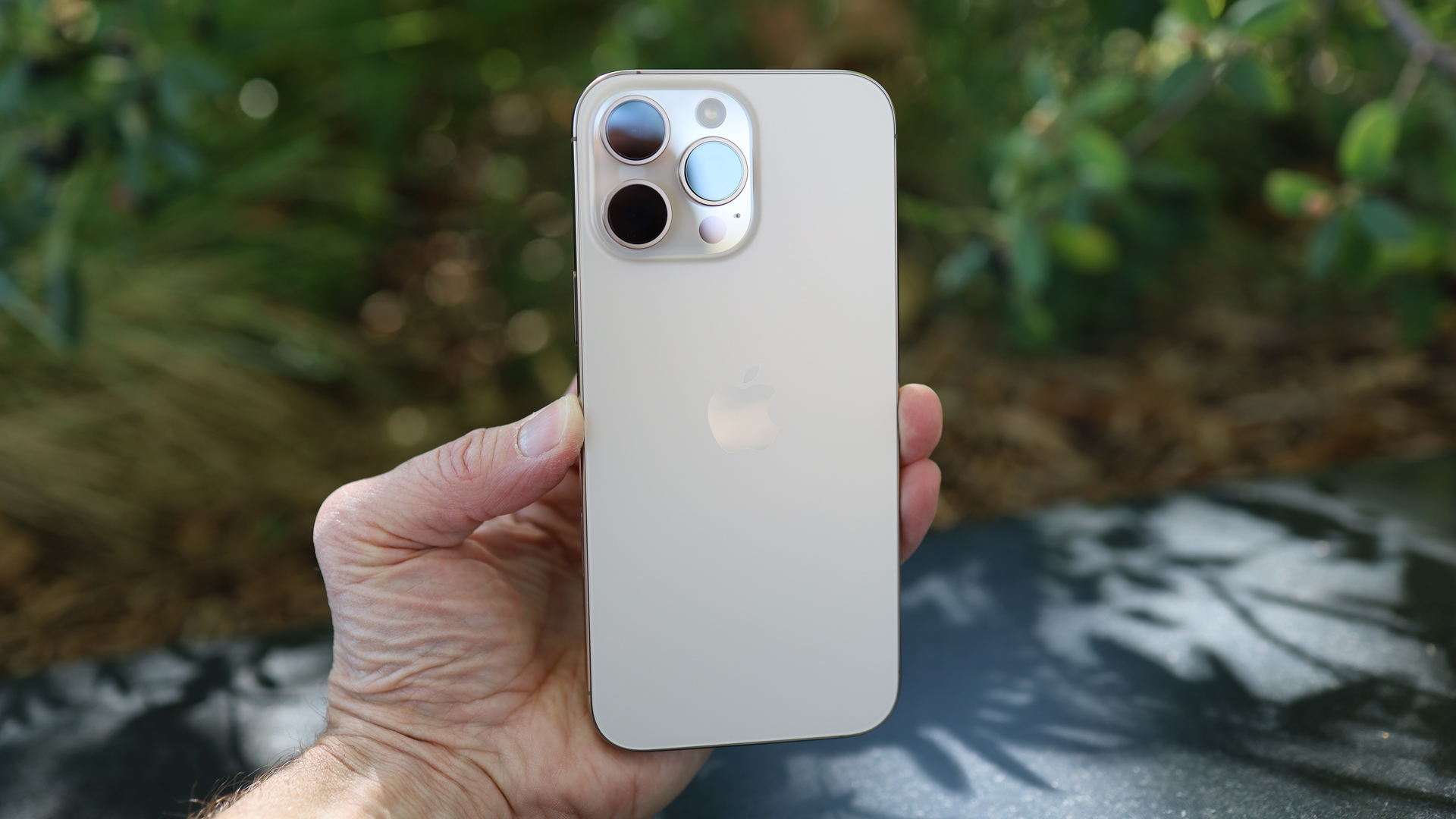
- The best iPhone overall – get this if you want the most powerful iPhone possible
- The 6.9-inch display is the largest on an iPhone, ever
- Triple camera system with 5x optical zoom
- Starts at $1,199 / £1,199 / AU$2,149
The iPhone 16 Pro Max is the largest and most powerful iPhone ever made, and our pick for the best iPhone overall. If you want the best performance, the largest screen, and the sharpest cameras, this is the one to buy. As our iPhone 16 Pro Max review notes, it’s a “beautiful, intelligent beast”, but it comes at a hefty price tag as a result.
The iPhone 16 Pro Max expands on its predecessor both physically and internally. It sports a new 6.9-inch 120Hz OLED display; a small size increase on the iPhone 15 Pro Max which is facilitated by slimmed-down bezels (though the chassis is physically larger, too).
The A18 Pro chipset promises 20% faster CPU performance and 15% faster GPU performance compared to the A17 Pro in the iPhone 15 Pro and Pro Max – though it’s genuinely hard to imagine who needs this much performance.
As for cameras, you’re looking at the same system as last year’s iPhone 15 Pro Max. The iPhone 16 Pro Max comes equipped with a 48MP main camera, a 48MP ultra-wide camera, and a 12MP telephoto camera with 5x optical zoom. The Camera Control button gives this class-leading camera system new and intuitive control options for shooting photos and videos, with a new slow-motion 4K 120fps video mode to boot.
This year's Pro and Pro Max models are identical in the camera, display, and performance departments, so which is right for you will come down more to personal preference. The iPhone 16 Pro Max is a truly large phone, and weighs in at 227g – 28g more than the smaller Pro. It's also tied with the iPhone 15 Pro Max for the most expensive iPhone Apple has ever made.
iPhone 15 Pro & iPhone 15 Pro Max: Power and AI for less

- Discontinued, but still readily available at third party retailers like Amazon
- Pro power and Apple Intelligence in a slightly more affordable package
- A17 chipset is still overpowered for most use cases
- Price varies by vendor
The iPhone 15 Pro and iPhone 15 Pro Max remain great buys considering that they'll be the only previous-generation iPhones to gain access to Apple Intelligence when Apple’s suite of AI features launches in October.
With the still-blazing-fast A17 Pro chipset and 8GB of RAM – the same amount as the iPhone 16 series – the iPhone 15 Pro and Pro Max are equipped to handle Apple Intelligence and pretty much anything else you can throw at them.
The camera system is also near-enough identical to the iPhone 16 Pro and Pro Max – a 48MP main camera, a 48MP ultrawide camera, and a 12MP telephoto camera ensure photos and videos are class-leading. You can also record 4K video at up to 60fps.
You do miss out on the new Camera Control and a bit of extra performance headroom compared to the iPhone 16 Pro and Pro Max, but at this level, it’s fairly difficult to find the upper limit. Top-end iPhones have been extremely powerful phones for years now, and as our iPhone 15 Pro review and iPhone 15 Pro Max review suggest, it’s unlikely you’ll be disappointed with either model.
The pair are, officially, discontinued, but third-party retailers continue to sell both models with no signs of stock running out yet.
iPhone 15 & iPhone 15 Plus: Capable, now cheaper
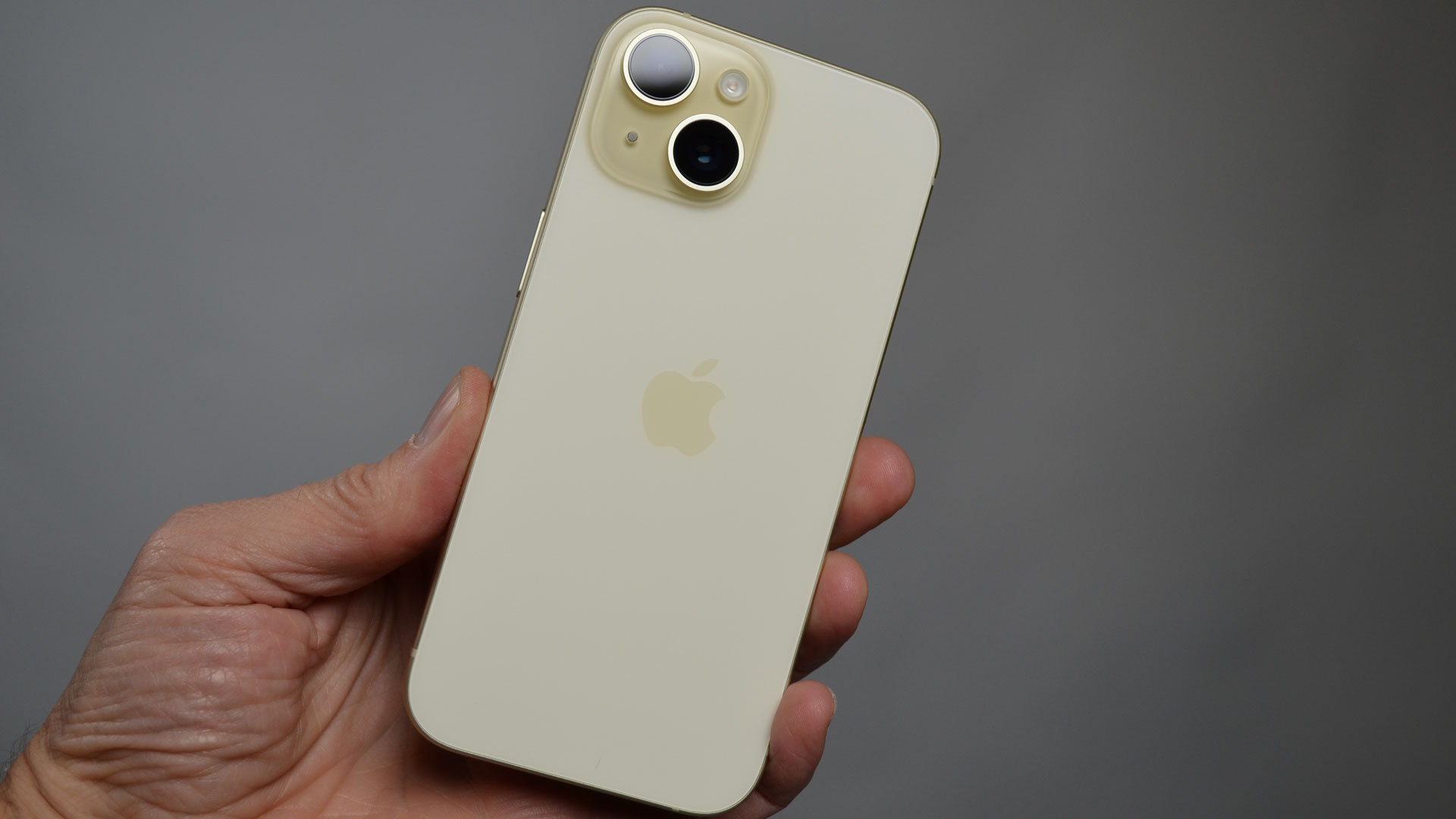
- Capable iPhones for people who don't care about AI – no Apple Intelligence support at all
- iPhone 15 is our pick for the best value iPhone
- USB-C and Dynamic Island
- Starts at $699 / £699 / AU$1,249
Apple continues to sell the iPhone 15 and iPhone 15 Plus directly for a discounted price, and these remain very capable handsets with great cameras and modern designs – the iPhone 15 is our pick for the best value iPhone because it offers so much for its newly lowered price.
The main caveat to buying an iPhone 15 or iPhone 15 Plus now is that this pair of iPhones will never support Apple Intelligence. This does raise some questions about whether the iPhone 15 and iPhone 15 Plus are good long-term purchases, as we don’t yet know how heavily Apple will lean on AI for future features and iOS updates.
Regardless, there are still some reasons to buy the iPhone 15 over the cheaper iPhone 14. The phones were the first standard iPhones to get the Dynamic Island and USB-C; moderate quality of life upgrades that really do add to the user experience over time.
And the combination of the A16 Bionic chipset and 6GB of RAM still provides enough power for most people's needs – indeed, our iPhone 15 review found that the phone has “more than enough power for most iPhone owners”.
iPhone 14 & iPhone 14 Plus: Split difference
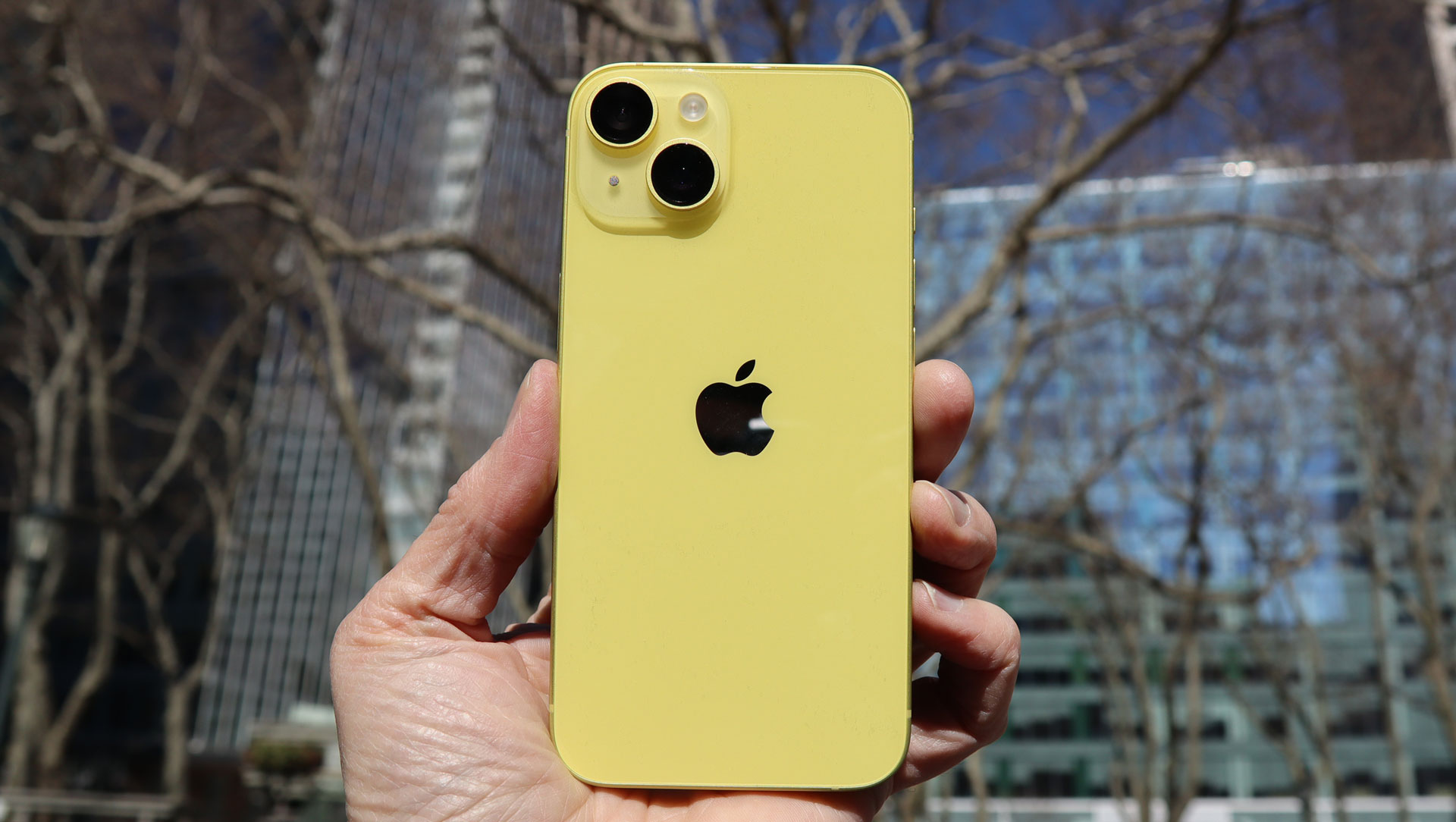
- If you need a cheaper big iPhone, the iPhone 14 Plus is your go-to
- Few reasons to buy the base iPhone 14
- Satellite connectivity for emergencies and crash detection
- Starts at $599 / £599 / AU$1,049
Towards the tail end of Apple’s current iPhone lineup sits the iPhone 14, which was a relatively tough sell when it launched in 2022 due to it inheriting the same 6.1-inch screen, 12MP main and ultrawide cameras, squared-off design, and A15 Bionic chipset as the iPhone 13, which launched a year prior.
The iPhone 13 was discontinued with the release of the iPhone 16 series, but now it’s the iPhone 15 that makes the iPhone 14 seem out of place. The iPhone 14 is the last mainline iPhone to feature a lightning port and the last base model to not get the Dynamic Island – for just $100 less than the iPhone 15, the iPhone 14 already feels dated.
Furthermore, with how cheap the iPhone 13 can be from third-party retailers, there’s little point in buying the iPhone 14 unless you really need the scant exclusive features (satellite connectivity being the main one) or Apple warranty.
The iPhone 14 Plus is a slightly different story – it has a bit more weight to it (both figuratively and literally) as Apple’s cheapest big phone. The iPhone 14 Plus was the first in the Plus series, so there’s no older model to pick up for a better deal – if you need a cheaper big iPhone, that's your best bet.
iPhone 13: The secret gem
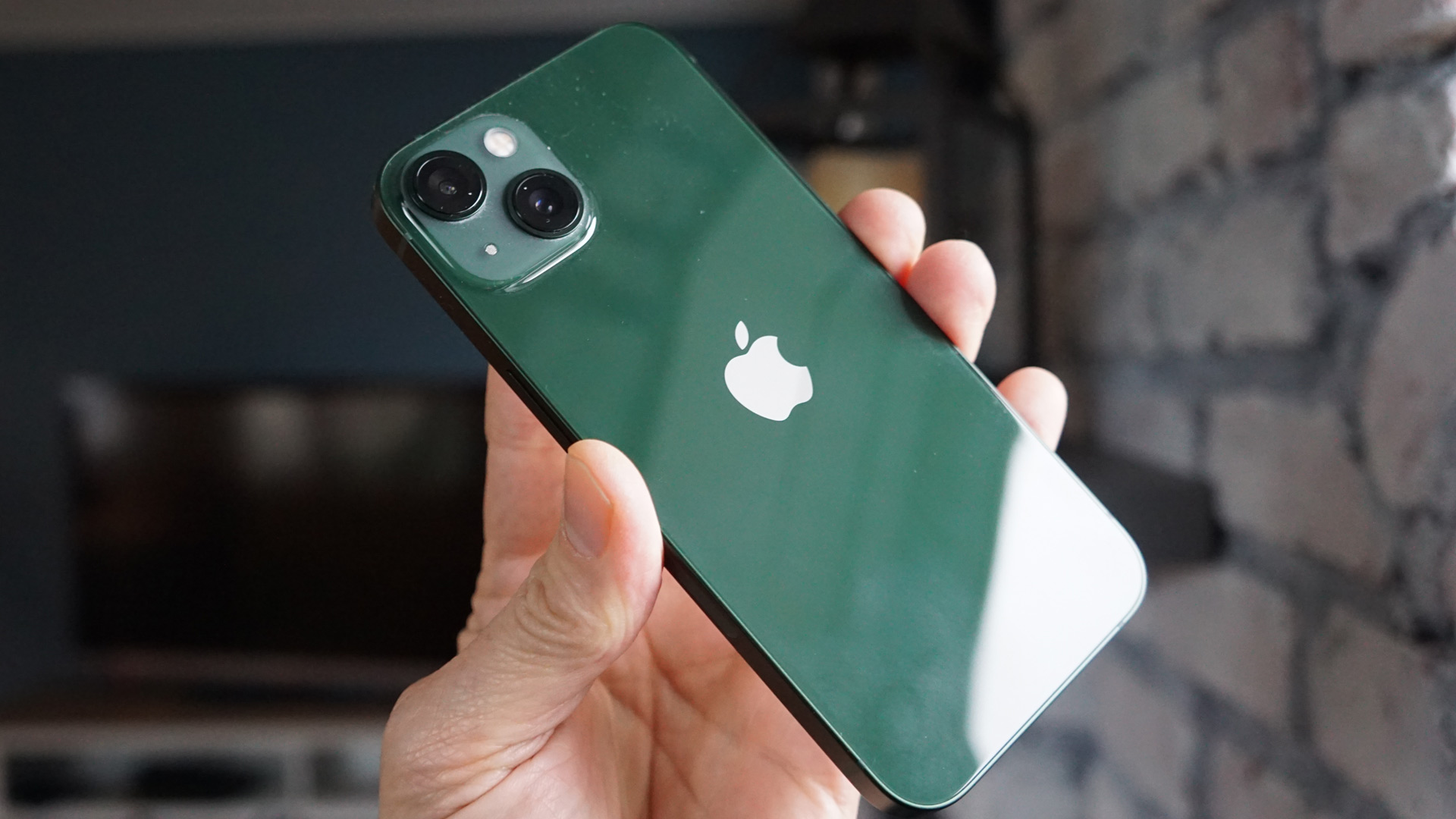
- Discontinued, and in low supply – get it while you still can
- A great value buy, especially compared to the iPhone 14
- Similar specs to the iPhone SE
- Price varies by vendor
The iPhone 13 is discontinued, but you can still find new units from third-party retailers if you’re willing to compromise on color or storage capacity. If you’re looking for a cheap, modern, and capable iPhone, the iPhone 13 is something of a secret gem, with a nearly identical spec sheet to the more recent iPhone 14.
The iPhone 13 comes equipped with the A15 Bionic chipset, a 6.1-inch 60Hz OLED display, 12MP main, ultrawide, and selfie cameras, and an aluminum and glass construction that are all identical to its follow-up. It comes with 4GB of RAM, which is slightly less than the iPhone 14, and has a slightly smaller quoted battery life. Still, as noted in our iPhone 13 review, the user experience between the two is likely to be remarkably similar.
This makes the iPhone 13 a profoundly good choice for budget-conscious users who want something a bit more advanced than the simpler iPhone SE – but act fast, as it’s unlikely to stick around for much longer.
iPhone SE: Budget-friendly nostalgia
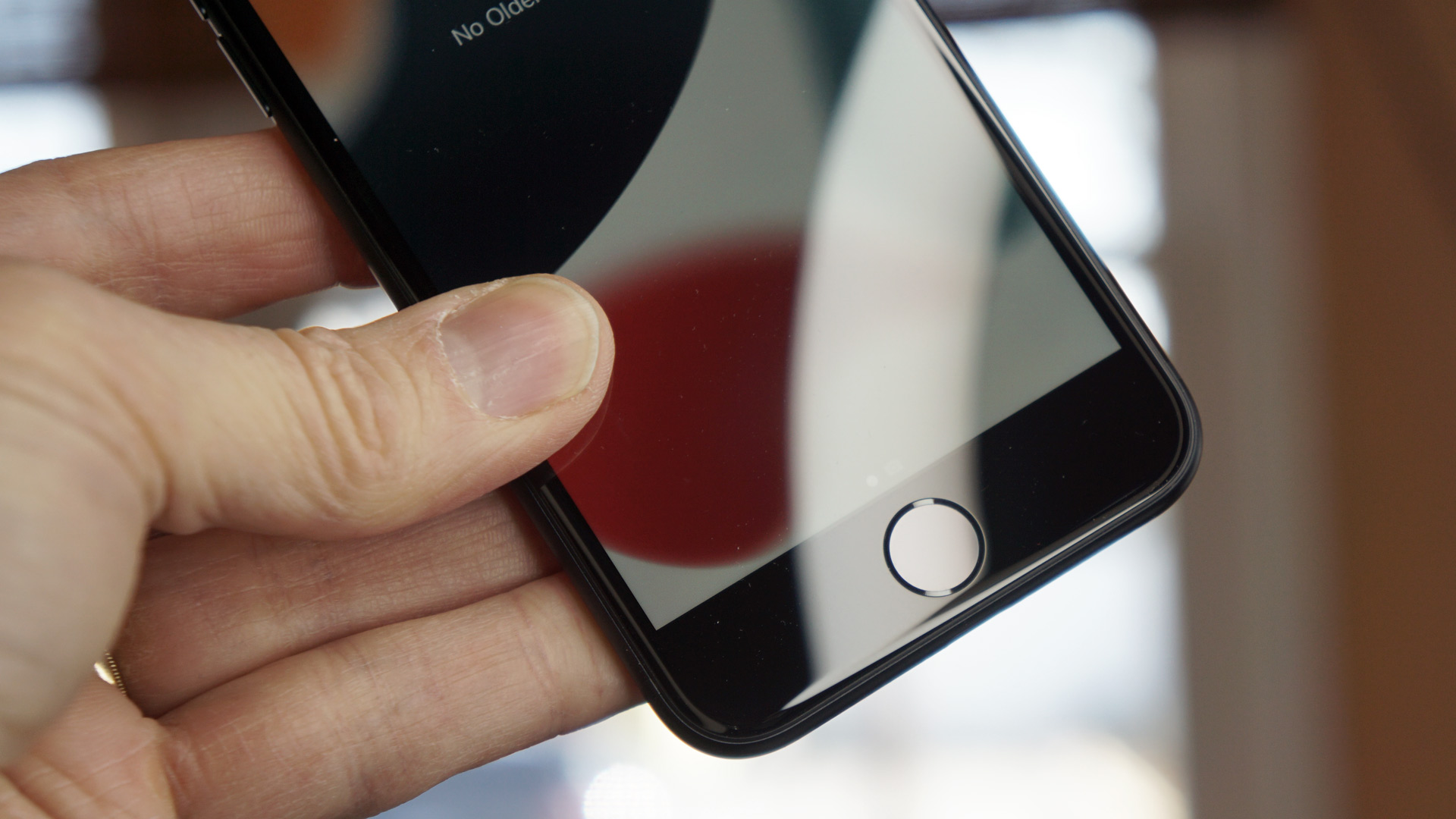
- Our pick for best budget iPhone – the cheapest phone sold by Apple
- iPhone 8 design, with Touch ID home button
- We think an update is on the way
- Starts at $429 / £429 / AU$719
For budget-focused buyers, the iPhone SE sits at the low end of the iPhone hierarchy, both in terms of specs and price. The current third-generation iPhone SE is essentially an iPhone 8 chassis with the specs of an iPhone 13, with a 4.7-inch screen, 12MP main camera, 5G connectivity, and the A15 Bionic chipset. It’s also the last iPhone with a home button, making it a great choice for those who value familiarity or struggle with on-screen gestures.
Our iPhone SE review found that the A15 Bionic chip – shared with the flagship iPhone 13 – gives the iPhone SE masses of headroom, making this a surprisingly powerful choice for mobile gaming and even content creation. It's still our choice for the best budget iPhone two years after launch.
We think an iPhone SE refresh is on the way soon, which we expect will say goodbye to the home button and adopt a design more akin to the base-model iPhone 14. So, if you’re a fan of the old iPhone design and the Touch ID-enabled home button, it could be wise to act fast on this one.







